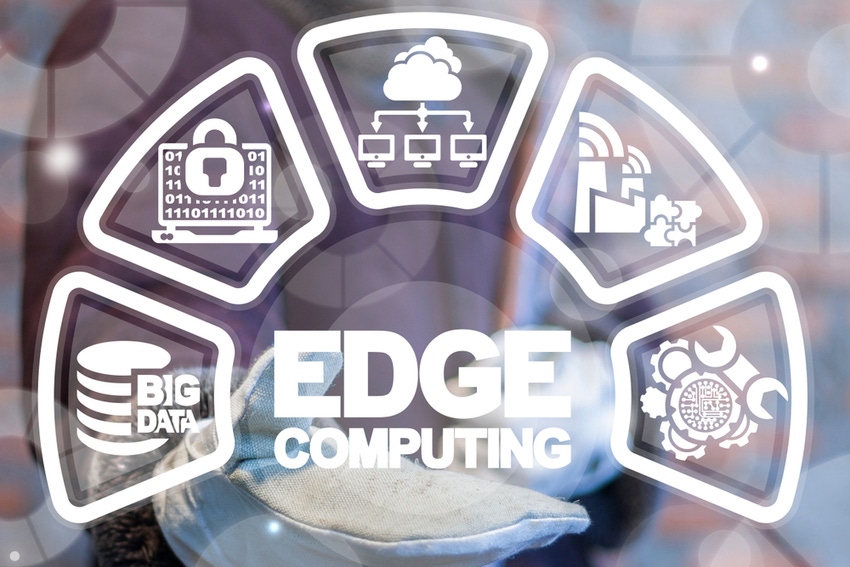Dell EMC, Infosys, MobileEdgeX, VMware and WWT are founding members.
April 8, 2020

Seamster, a new consortium, is creating what it describes as an open enterprise edge ecosystem focused on accelerating the deployment of private and hybrid 5G networks.
MobiledgeX, a startup Deutsch Telekom formed in late 2017, operates a cloud-based platform called Edge Cloud. It created Seamster to establish an “edge-to-edge value chain.” Because Edge Cloud enables mission-critical applications that use MobiledgeX’s distributed edge service APIs, the company has already created its own broad enterprise edge ecosystem.
Seamster now aims to bring a wider enterprise edge ecosystem together. Specifically, its focus is for members to collectively discover use cases and adoption blueprints with a sustainable economic model. They achieve this by collaborating, partnering and sharing research. The aim is to bring 5G and other advanced communications technology, along with high-performance compute, to emerging enterprise solutions that use robotics, image recognition, machine learning and augmented reality. in verticals such as retail, health care, smart cities, manufacturing and gaming.
In forming Seamster, MobiledgeX has recruited hardware and software providers, system integrators, application developers and mobile network operators. Accedian, Dell EMC, Infosys, Quanta Cloud Technology (QCT), and Stratacache are on board at launch. So are Topio Networks, VMware, Wind River and World Wide Technology (WWT). Additional members will come forward next month, according to Seamster participants.
Key in creating an “open” enterprise edge ecosystem will include mobile operators from around the world. AT&T and Intel are expected to join Seamster, though neither has officially commented. Both companies dropped out of last week’s online launch event at the last minute. A Seamster spokesman said additional participants will come forward next month. MobiledgeX originally planned to launch Seamster during February’s Mobile World Congress in Barcelona. But that show became among the first major conferences canceled due to the spread of COVID-19.
MobiledgeX CEO Jason Hoffman laments barriers to growth in bringing high-performance computing and communications to the edge. Distribution models and ways to economically engage are well-defined in the device and public cloud worlds. Specifically, that refers to the infrastructure that connects the two. For operators, the infrastructure is the transport core. For enterprises, it’s the distributed infrastructure within their locations. Nevertheless, there is no such distribution model for the edge, according to Hoffman.

MobiledgeX’s Jason Hoffman
“Everything we do from a product development perspective is to really help there be a clear means of distribution to get access to a lot of these interesting spots, and then from an ecosystem-building perspective, start a value chain away from everybody to economically gain,” he said.
The effort will commence with researching opportunities, needs and the models required to enable growth in the years ahead.
“What we discovered, just like everybody else, is we don’t know exactly what the future is going to be, even though of course, we’re trying to influence it, and help everybody along with it,” Hoffman said. “And we also realized that we really have to take this type of ecosystem approach, where we’re actually helping everybody else figure out their edge strategies, where they’re going to fit in this new world.”
Joe Wojtal, CTO of WWT’s global service provider business, sees the edge as the next opportunity to …
… deliver new solutions. Seamster is an opportunity make sure partners are on the same page, according to Wojtal.
“The opportunity here to be able to articulate and play a role at the edge means that there is a need to be able to synthesize industry requirements and turn them into technology models,” Wojtal said. “And it’s not just cookie cutter, standard IT infrastructure [needed] to enable this. It really requires us to take a step back and look at the specific solutions, the ecosystem that needs to be built to solve a particular problem at a time, and to continue to replicate that across every problem, every outcome that you’re looking for from an industry perspective.”

Senza Fili’s Monica Paolini
Industry analyst Monica Paolini, founder and president of Senza Fili, said enterprises are demanding high-performance edge services. But the current routes to market remain fragmented. Wireless infrastructure suppliers typically sell and interact with telecom providers, which have different requirements and business models than enterprises.
“One challenge you constantly find is that the enterprise wants to have more control over the wireless infrastructure,” Paolini said. “Enterprises have all sorts of needs, and it’s difficult for those moving from the wireless ecosystem to go and meet all those enterprise requirements, because there are different verticals and different applications. It’s a huge opportunity, but to be able to address it all, it’s a challenge. What Seamster is trying to do is to put everybody together so that it’s easier for the vendors to talk to the enterprise and for the enterprises to talk to the vendors, and hopefully that might improve the ecosystem.”
About the Author(s)
You May Also Like


